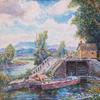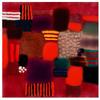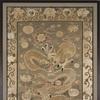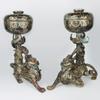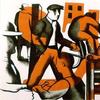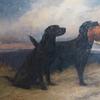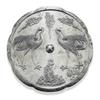Major International Overview of the Work of Photographer Sally Mann Travels to West Coast
- LOS ANGELES, California
- /
- September 19, 2018
For more than 40 years, Sally Mann (b. 1951) has made experimental, intimate, and hauntingly beautiful photographs that explore themes of memory, desire, death, the bonds of family, and nature's indifference to human endeavor. Sally Mann: A Thousand Crossings, on view November 16, 2018-February 10, 2019 at the J. Paul Getty Museum, Getty Center, is the first major survey of this celebrated artist to travel internationally, and the first to investigate how Mann's relationship with her native land, the American South—a place rich in literary and artistic traditions but troubled by history—has shaped her work. The exhibition is organized by the National Gallery of Art, Washington, and the Peabody Essex Museum, Salem, Massachusetts. The Getty is the only West Coast venue for this international tour, which brings together 110 photographs, many exhibited for the first time.
The exhibition is organized into five sections—Family, The Land, Last Measure, Abide with Me, and What Remains. It opens with works from the 1980s, when Mann began to photograph her three children at the family's remote summer cabin on the Maury River near Lexington, Virginia. Taken with an 8 x 10 inch view camera, the family pictures refute sentimental stereotypes of childhood, instead offering unsettling visions of its complexity. Rooted in the experience of a particular natural environment—Arcadian woodlands, rocky cliffs, and languid rivers—these works convey the inextricable link between the family and the landscape, and the sanctuary and freedom that it provided them.
Mann also photographed numerous 19th-century African American churches near her home in Lexington. Founded in the decades immediately after the Civil War, when African Americans in Virginia could worship without the presence of a white minister for the first time, these humble but richly resonant churches seem alive with the spirit that inspired their creation and the memories of those who prayed there.
Also included in Abide with Me are photographs of Virginia "Gee-Gee" Carter, the African American woman who worked for Mann’s parents. A defining and beloved presence in Mann's life, Carter taught Mann the profoundly complicated and charged nature of race relations in the South. The final component of this section is a group of pictures of African American men rendered as large prints (50 x 40 inches) made from collodion negatives. Representing Mann's desire to reach across "the seemingly untraversable chasm of race in the American South," the series was inspired in part by the work of the choreographer Bill T. Jones. Lamenting the racism that has subjected African Americans to stereotyping, exploitation, and violence, Jones noted that “the body is the thing that . . . connects us, the body is bought and sold, and the body is definitely the thing that will divide us.” Mann sought to make photographs that address this paradox.
The final section of the exhibition, What Remains, explores themes of time and transformation through photographs of Mann and her family. Her enduring fascination with decay and the body's vulnerability to the ravages of time is evident in a series of spectral portraits of her children's faces and intimate photographs detailing the changing body of her husband Larry, who suffers from muscular dystrophy. The exhibition closes with several riveting self-portraits Mann made in the wake of a serious riding accident. Here, her links to southern literature and her preoccupation with deterioration are evident: the pitted, scratched, ravaged, and cloudy surfaces of the photographs function as analogues for the body's decay. The impression of the series as a whole is of an artist confronting her own mortality with composure and conviction.
The exhibition is accompanied by a fully illustrated catalog, presenting an in-depth exploration of the evolution of Mann's art, and two short films that illuminate the artist’s experimental and inquisitive approach to making images.
“Because the legacy of the South so profoundly continues to influence life throughout the United States, we are pleased to have the chance to bring this exhibition to Southern California. The artist’s meditative and meticulously crafted photographs encourage us to look more carefully at the places in which we live and the people in our lives,” says Mazie Harris, assistant curator of photographs at the J. Paul Getty Museum. “Her pictures encourage us to attend to the ways in which our sense of family, place, and history inform our perspective on the world.”
Sally Mann: A Thousand Crossings is curated by Sarah Greenough, senior curator and head of the department of photographs, National Gallery of Art, and Sarah Kennel, The Byrne Family Curator of Photography, Peabody Essex Museum.
Generously supported at the J. Paul Getty Museum by Gagosian.
Exhibition Tour
- National Gallery of Art, Washington, March 4–May 28, 2018
- Peabody Essex Museum, Salem, June 30–September 23, 2018
- The J. Paul Getty Museum, Los Angeles, November 16, 2018–February 10, 2019
- Museum of Fine Arts, Houston, March 3–May 27, 2019
- Jeu de Paume, Paris, June 17 –September 22, 2019
- High Museum of Art, Atlanta, October 19, 2019 –January 12, 2020

